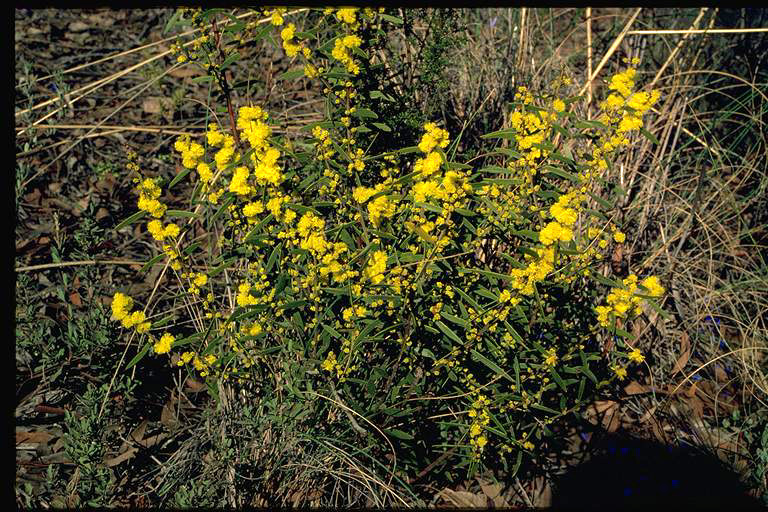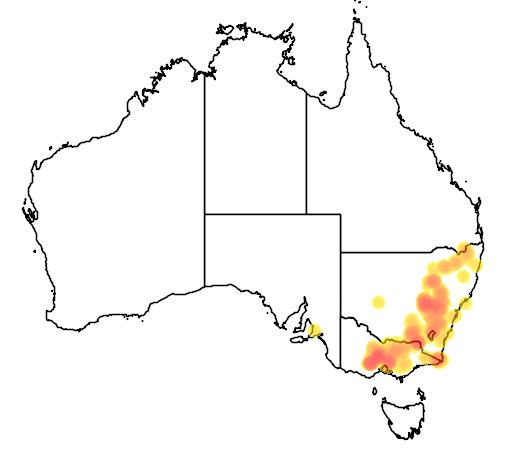Description
Common names
Woolly Wattle, Hairy Wattle.
Scientific names
Acacia lanigera.
Family
Mimosaceae.
Genus
Acacia.
Name origin
Lanigera, from Latin lana, wool, and gerus, bearing, referring to woolly hairs on "leaves" and stems.
Rainfall
400-700mm.
Growth rate
Moderate.
Growth height
0.5-3m.
Presence in Australia
Noted on the drier hills of many catchments and districts, east of the Olympic Highway.
This specie has been identified in the following Australian states: QLD, NSW, ACT, Vic, SA.
Habitat
Woodland and dry sclerophyll forest, on poor gravely and sandy soil.
Habit
Small erect or spreading shrub 50cm to 3m high, with rigid stems and "leaves". Grey bark and flattened or angled hairy branchlets.
Site preference
Well-drained soils. Tolerates short periods of wetness.
Characteristics
Very long-lived. Moderate growth rate. Wasps form galls on flower buds in some areas. Conspicuous woody galls also caused by a fungus.
Flowering
Golden-yellow, usually Jul-Sept.
Seed collection
Mid Nov to early Jan, when pods are brown and curled. Monitor closely as seeds released immediately or 1-2 days after maturity.
Propagation
From scarified seed. Pour boiling or very hot water over seeds and soak for several hours before sowing.
Regeneration
From seed, particularly after fire. Establishes moderately well when direct seeded.
Shade and shelter
Useful low-level cover in windbreaks.
Land protection
Useful for stabilising soil and improving soil fertility. Legume, improves soil fertility by "fixing" nitrogen.
Wildlife
Good habitat. Flowers are a pollen source for native moths, butterflies and other native insects, and a nectar-source for birds including honeyeaters. Insect-eating birds attracted. Native birds, including parrots and pigeons eat seeds.
Ornamental
Attractive ornamental for gardens, due to foliage and early flowering. Prune after flowering to maintain shape. Adaptable.


